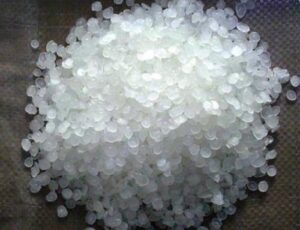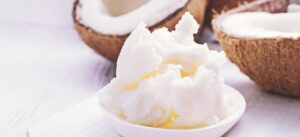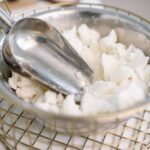COD available for orders below 1500. Shipping Charges will be added at the end while placing the order. Happy Candle 🕯️ Making. Dispatch Timeline - 8 to 10 days minimum due to peak season.
What are Candle Making Wax? The Best Wax for Candle Making!
The candle-making industry has been growing at a fast pace in recent years. With its growth, a wide range of waxes are also available on the market. Hence, it could be challenging to choose the right wax from an ever-growing number of options.
In this article, let us have a detailed overview of wax, its various categories, origin, properties, and usage in candle making business. If you’re a beginner in candle making business you will learn a lot.
What is Candle Wax?
Candle wax is the main component of a candle. It is primarily a hydrocarbon in solid form at room temperature which melts upon heating. This melted wax serves as fuel and keeps the candle burning to produce light and heat. As this wax cools, it solidifies again. Waxes are used for candle making as they melt and burn at a controlled rate while also holding fragrance and colour additives effectively. Furthermore, candle waxes produce candles of different sizes and shapes. Thus, a candle’s wax plays a crucial role in shaping it into a beautiful, fragrant, and functional candle.
Types of Candle Wax
There are numerous kinds of candle wax available on the market, each with its own set of properties and advantages. Hence candle waxes are categorized according to their composition, origin, and properties. This helps consumers to make an informed decision by understanding the characteristics, properties, and sustainability of different wax options available to them for candle making at home or at business.
The following section will help you understand how waxes are classified.
Natural Wax
As the name suggests, this wax is available naturally. Beeswax is produced by honeybees and is one of the oldest waxes known to mankind. Beeswax was the main source of wax that was available and hence was valuable in many ancient civilizations. It has been used for various applications including candle making, cosmetics etc. since ancient times.
Examples: Yellow Beeswax, White Beeswax
Petroleum-Based Waxes
These waxes are derived from petroleum or crude oil. Paraffin wax which is a petroleum-based wax is widely used in candle making. These waxes are known for their affordability, versatility, and ability to hold fragrance well.
Examples: Paraffin Wax, Microcrystalline Wax
Vegetable Wax
As the name suggests, these waxes are derived from plant or vegetable sources. They are derived from various parts of plants like leaves, peel, and fruit of various plants. They are also made by de-waxing plant oils. Vegetable waxes are in demand for their green and renewable characteristics as well as sustainable properties.
Examples: Soy Wax, Palm Wax, Coconut Wax, Rapeseed Wax, Bayberry Wax, Carnauba Wax, etc.
Blended Wax
Different kinds of waxes are blended to achieve desired characteristics from the finished candle. The benefits of both wax types may be combined in a mix. Blends of paraffin and soy wax, for instance, may offer the benefits of both waxes, such as affordability and cleaner burning.
Examples: Paraffin-Soy Blend, Paraffin-Beeswax Blend, etc.
A Brief Overview of Some Popular Waxes for Candle Making
Each wax has its own distinct characteristics and performance affecting various factors such as burn time, fragrance throw, appearance, and ease of use. Hence it is important to understand the properties and uses of some commonly used waxes to make informed decisions while choosing them. Let’s have a closer look at a few popular wax options to help you craft your perfect candle.
Beeswax
Beeswax is a natural wax produced by honeybees. A worker bee forms beeswax in the hive, which serves as the building material for honeycomb cells.

Beeswax is a versatile wax that has been used for centuries in cosmetics and various applications including candle making. Beeswax’s beautiful natural color has many shades from pale yellow to golden brown depending upon its purity and the bees’ diet.
Beeswax is a popular choice among candle makers who value its natural origin, warm and aromatic scent, and rustic colour.
Special characteristics of Beeswax
- Naturally available and renewable source
- Pleasant natural aromatic fragrance
- Longest burn time makes candles last longer
- Clean and non-toxic burn
- Beautiful natural colour and texture
- Hard and durable that can withstand higher temperature
Candle types that can be made using Beeswax
- Pillar candles
- Container candles
- Votive candles
- Tealight candles
- Taper candles
- Tart candles
Note: Cosmetic-grade Beeswax is a popular choice and is widely used in various cosmetic products.
Paraffin Wax
The wax is a white, solid, and odourless material, derived from petroleum, a fossil fuel that cannot be replenished. It is treated through a refining process which removes impurities. It is then formed into blocks or pellets.

Paraffin wax is popular and widely used for candle making as it is affordable, easy to handle, and readily available. Additionally, it is less expensive compared to other waxes.
Paraffin wax has the ability to easily blend with other waxes or additives. This blending enhances the product’s performance by improving scent throw and reducing cracks. oil.
Special characteristics of paraffin wax
- Easy availability
- Inexpensive as compared to other waxes
- Low melting point (120 to 160 degrees Fahrenheit) makes it easy to work with
- Excellent fragrance-holding capacity
- Easy dying with various colours
- Smooth appearance – can be easily polished
- Steady and consistent burn
Candle Types that can be made using Paraffin Wax
- Pillar candles
- Container candles
- Votive candles
- Tealight candles
- Taper candles
- Tart candles
Note: Cosmetic-grade paraffin wax is used in cosmetic products.
Soy Wax
Soy wax is a vegetable wax derived from soybean oil. Soybeans are harvested once they are ready. The harvested beans are then cleaned to remove impurities. The cleaned soybeans are crushed to remove the outer covering of the beans. Oil-rich interior of the soybeans is rolled into flakes. Soy oil is then extracted from the flakes. This soyabean oil is then hydrogenated. After cooling the hydrogenated oil gets solidify to form wax.

Soy wax is a popular and widely used alternative to traditional waxes like paraffin and beeswax. It has gained popularity in the candle- making industry for its natural and eco-friendly characteristics.
Special Characteristics of Soy Wax
- It is natural and renewable.
- Clean soot free burn – environment friendly.
- Biodegradable which breaks down naturally.
- Excellent scent throw.
- Good colour retention.
- Longer burning time.
- Low melting point (120 to 140 degrees Fahrenheit) makes it convenient to work with.
- Adaptable for Container Candles – has good adhesion to glass or ceramic containers.
Candle types that can be made using Soy wax
- Container candles
Note: Cosmetic-grade Soy Wax is used in Cosmetic Products.
Coconut Wax
Coconut wax is white and bright wax and is considered one of the healthiest and best waxes for candle making.

It is made from coconut oil. The oil is extracted by cold pressing to retain its natural properties. The extracted oil is then refined to remove impurities. This is followed by hydrogenation which increases the melting point of the oil to produce coconut wax.
The unique tropical scent throw and creamy texture make it a popular choice for luxury and scented candles. Coconut wax can easily be blended with other natural waxes. Candles made with this blended wax have better burn quality and fragrance throw. The white and bright colour of coconut wax makes it easy to dye with any colour to create candles of diverse colours.
Special Characteristics of Coconut Wax
- It is natural and sustainable
- Clean soot free burn which is non-toxic
- Biodegradable which breaks down naturally
- Excellent scent throw
- Good colour retention
- Soft and creamy texture makes it easy to work with
- Longer burn time
- Adaptable for Container Candles – has good adhesion to glass or ceramic containers
Candle Types that can be made using Coconut Wax
- Container Candles
Note: Cosmetic-grade Coconut wax is used in cosmetic products.
Gel Wax
Gel wax is not a typical wax at all. It is made by blending resin and mineral oil which gives a unique see-through look to the wax. This translucent material has a gel-like consistency. This versatile wax is a popular choice for candle-making due to its ability to create aesthetically pleasing and decorative candles. This wax holds fragrance and color, and it melts and burns just like other waxes.

This material is an excellent choice for clear container candles. It allows you to add various small decorations to the container before pouring in the gel. These decorative designs will remain visible after the gel has been set. Gel candles emit very bright light and have a longer burn time than regular wax candles.
Special Characteristics of Gel Wax
- Distinctive and attractive appearance
- Can add captivating visual effects
- Versatility in design options
- Good fragrance-holding capacity
- Longer burning time
Candle Types that can be made using Gel Wax
- Container candles
- Embedded candles
- Floating candles
- Tealight candles
Conclusion
As we have seen, there are a variety of waxes available in the market. Each type of wax has its own unique characteristics, appearance and advantages. While selecting the best wax for your candle making business, you may consider the factors such as type of wax, melting point, scent throw, burn quality, aesthetics, Eco-friendliness, cost and even personal preferences.
V Candles Supplies would be delighted to assist you in starting your candle making business. Our candle making supplies comprise premium-quality raw materials for candle makers. Additionally, we conduct candle making workshops and provide guidance specifically tailored for beginners. Our expert team will assist you in selecting the appropriate materials and guide you through the manufacturing process.
We are dedicated to ensuring that you gain the necessary knowledge and confidence to craft exceptional candles. Count on us to support your success, and we eagerly anticipate being part of your candle-making journey.




